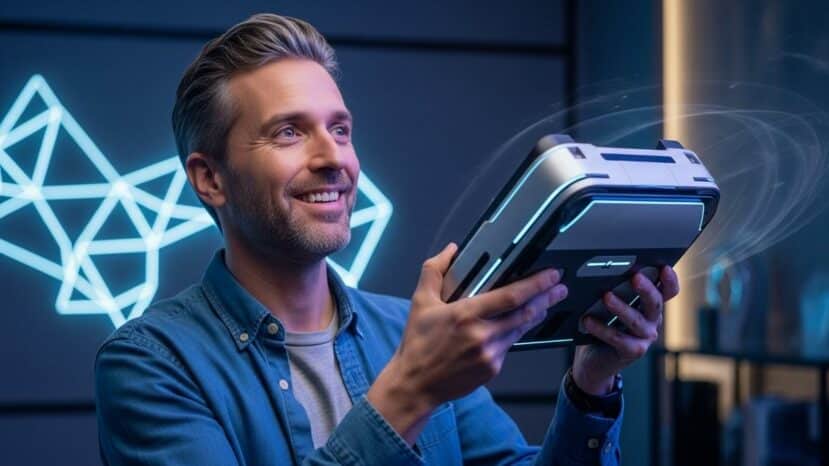PlayStation 6 prepares for 2028: major innovations and everything we know

The PlayStation 6 enters the field of vision, with clearer signals and more concrete milestones. So gamers can already project their expectations, without having to jump through hoops in a cycle still in progress.
Timetable, strategic direction and likely windows
According to documents made public during regulatory proceedings, Sony is aiming for a release around 2028 for its next-generation console. This window is in line with the traditional life cycle of its consoles, and leaves an intermediate plateau provided by the PS5 Pro. As a result, studios have time to adapt their engines and pipelines.
The manufacturer is keeping quiet about the detailed timetable, but the roadmap seems pragmatic. The transition will be based on a long cross-gen phase, in order to secure catalogs. On the other hand, the technological switchover will require revised tools for ray tracing and AI.
Final prices are not known, as the economic situation and component costs weigh heavily. It would therefore be in Sony’s best interest to spread out its product range and optimize production from
“The next generation will be a marathon, not a sprint.”
Graphics chip, CPU and expected performance
Industry signals point to a new-generation AMD architecture, notably on the GPU side with RDNA 5. The PlayStation 6 would then gain in ray tracing, efficiency and bandwidth. The associated CPU would take AI and physics up a notch, for more responsive worlds.
Upscaling techniques are making rapid progress, opening the door to smooth 4K rendering, and even 8K for targeted content. From now on, it’s not just a question of raw power, but of optimization. Consequently, a faster SSD and larger memory would be key to reducing waiting times.
- Target date around 2028, according to official documents.
- AMD GPU in RDNA 5, for enhanced ray tracing.
- Extended cross-gen transition to secure catalogs.
- Fast storage and upscaling AI for stable performance.
- Balance between power, cost and consumption.
Games, controllers and services in the post-PS5 era
The controller should remain a major lever, with refined haptic feedback and adaptive triggers. In this way, narrative and multiplayer games would gain in useful sensations, not gimmicks. What’s more, better-calibrated 3D audio would enhance the clarity of action scenes.
Sony – PlayStation 6 (Game console; High performance, Portable; between €299 and €699)
Designed for the living room and mobility via the connected ecosystem, the machine is said to aim for stable rendering and rapid access to content. Pricing would be in the indicative range of €299 to €699, depending on configuration and market.
Services will continue to play a decisive role, with the cloud playing a greater role in the offering. Subscriptions will unify purchases, backups and streaming for greater flexibility. From now on, the PlayStation 6 will have to deal with nomadic uses and shared libraries.
AMD – RDNA 5 graphics chip (Component for PlayStation 6; no price mentioned)
Targeted at high-efficiency rendering, this generation puts the emphasis on ray tracing and upscaling AI. The choice secures studios’ tool ecosystem, while paving the way for measurable gains per watt.
Competition, market pace and constraints
Faced with the expected announcements from Nintendo and Microsoft, the road ahead is a tight one. Sony, on the other hand, is accustomed to orchestrating long transitions, to spare both gamers and developers. Thus, the PlayStation 6 will have to be convincing without upsetting what already exists.
Nintendo – Switch 2 (Handheld; No price specified)
The next hybrid machine is tipped for launch in the near future. Its window could stimulate a repositioning of third-party releases and increase pressure on cross-gen schedules.
The PC continues to absorb temporary exclusives, which is shaking up models. As a result, the balance between store sales, dematerialized sales and subscriptions will remain delicate. As a result, PlayStation 6 will have to offer clear reasons to play day one on console.
Design, sobriety and the supply chain
Thermal design will guide format, noise and consumption. A chassis designed with airflow in mind, and better-finished components, will help stabilize performance. In addition, reparability will benefit from further progress, to last 7 to 8 years.
Samsung – Component for PlayStation Portable (Codename: Jupiter; No price mentioned)
Clues point to parts dedicated to a portable device connected to the PlayStation ecosystem. The ” Jupiter ” project has yet to be confirmed, but it would accompany a more flexible mobility strategy.
In the next 18 to 24 months, we’ll be on the lookout for development kits, ray tracing demos and storage information. From now on, every industrial signal will count to refine expectations. In short, the PlayStation 6 will have to strike a balance between visible innovation and everyday reliability.





No comments
Post a comment
Always participate in accordance with the law and with respect for others.